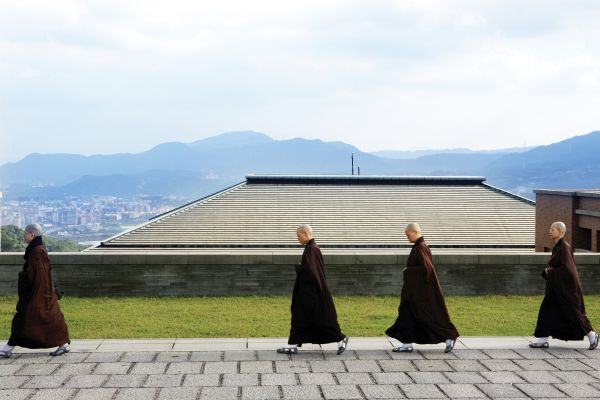Special Topics
Enjoy One Step at a Time
 Living in today's fast-paced society, we hurry to work or to meetings every day. We are always on the move to arrive somewhere. Though our legs are moving, we are not aware of it; we do not focus on our steps. In addition, whether we are walking leisurely or taking strides for good health, we usually focus on whatever catches our eye, and are immersed in thoughts, music, or talks. Walking with such a divided mind can scarcely help to improve health and generate relaxation. So, what exactly can we do to walk with ease, for a healthy life?
Living in today's fast-paced society, we hurry to work or to meetings every day. We are always on the move to arrive somewhere. Though our legs are moving, we are not aware of it; we do not focus on our steps. In addition, whether we are walking leisurely or taking strides for good health, we usually focus on whatever catches our eye, and are immersed in thoughts, music, or talks. Walking with such a divided mind can scarcely help to improve health and generate relaxation. So, what exactly can we do to walk with ease, for a healthy life?2,600 years ago, before cars, trains, and planes were invented, Shakyamuni Buddha and his disciples traveled by foot along the Ganges to spread the Dharma. Taking one step at a time, the Buddha walked in solemnity, peace, and joy, in order to manifest and preach the Dharma during his long ministry of forty-five years. He taught his disciples a walking method that could help them calm their minds--- walking meditation, also known as cankrama in Sanskrit. This method involves walking back and forth single-mindedly at a steady and moderate pace, with a stable, upright posture, and in a prescribed area of an open field or in a forest.
To "gather in the six senses and no longer cling to external circumstances" is, in fact, to bring our wandering minds back into the present moment. In this regard, walking meditation--unlike strolling--- is a method of diligent practice.
According to Dharmagupta-vinaya(Sutra of the Appearance of Light), as well as related documents, walking meditation can not only help improve digestion, strengthen the immune system, and counteract fatigue, but it can also help practitioners attain long-lasting Samadhi. It is evident that it improves mental and physical health, harmonizes the body and mind, and makes us mindful.
How, in the midst of bodily motion, can we focus on generating a calm mind? Walking, in fact, requires only easy and repetitive movements. When we single-mindedly focus on each step, we gradually stabilize the mind. While walking, we just need to be mindful of our actions and know exactly what our bodies are doing. Thus, such an easy act as walking can train both the body and mind.
Though walking meditation is a diligent method of Buddhist practice, everyone can conveniently apply it to harmonize and calm the body and mind in everyday life.
Resource: Issue 323 of Life Magazine, Dharma Drum Publishing Corporation
Text: Hsu, Tsui Ku (許翠谷)
Translation: Hsiao Chen-an
Editing: DDM Editorial Team, Keith Brown
Extended Reading:
Being Mindful of Where We Are---The Practice of Walking Meditation in Daily Life
Practice Walking Meditation to Experience Chan in Motion
